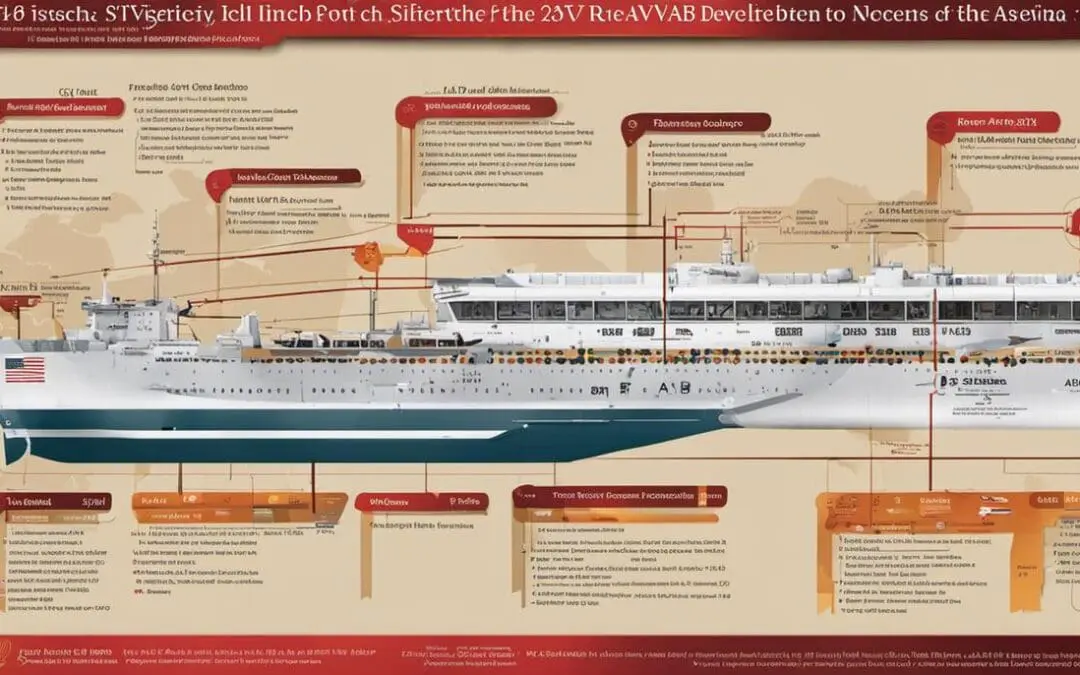The Armed Services Vocational Aptitude Battery (ASVAB) has played a pivotal role in military enlistment since its inception. Its historical evolution alongside the nature of its components and the interpretation of its results has significantly impacted both armed services and potential test-takers. Offering a gate-pass to a range of career opportunities in the military, the ASVAB, with its eligibility criteria and scoring patterns, remains a central point of interest for those aspiring to serve the nation. This discussion aims to shed light on these facets, firstly exploring ASVAB’s chronological development, followed by an overview of its structure, a detailed account of the eligibility criteria, correlation of ASVAB scores with military occupational specialties, and ultimately, effective strategies for ASVAB preparation.
History of ASVAB
Title: The Evolution of the ASVAB: A Benchmark of Potential for U.S. Armed Services
The Armed Services Vocational Aptitude Battery (ASVAB), a longstanding foundation of the United States military’s personnel selection process, bears a rich and intriguing history. Its evolution has seen it transition from a standardised aptitude test to a quintessential measure of candidate potential for U.S. armed services.
Way back in 1917, during World War I, the U.S Army Alpha and Beta tests paved the way for the modern ASVAB. These tests, primitive yet imperative precursors of the current versions, were primarily used to segregate the literate from the illiterate recruits. This was a transformative phase in the Army’s selection system, signifying the beginning of scientifically-based personnel decisions.
The dawn of World War II witnessed an expansion of these tests with the Army General Classification Test (AGCT) implementation. Highly reliant on psychometric theories, the AGCT was fundamentally an intellectual test. It provided a ranking system to recruits that effectively determined their eligibility for officer candidate schools and specialized training.
Undeniably, the most profound metamorphosis occurred in 1968 with the birth of the first true ASVAB. This multi-aptitude test aimed to measure developed abilities and future occupational success. It introduced an egalitarian assessment paradigm, offering a wide range of vocational areas encompassing both military and civilian fields. This all-encompassing approach significantly broadened the potential pool of qualified recruits.
One of the most notable modifications to the ASVAB was in 1974, when the test was computerized, paving the way for the Computerized Adaptive Testing (CAT-ASVAB) edition. This innovative approach increased the efficiency and accuracy of the test, significantly cutting down on administration time and ensuring a more individualized assessment experience. It was a testament to the successful merging of technological strides and psychometric principles.
1980 marked another milestone as the ASVAB was instated as the military’s sole enlistment test. It resulted in a universally standardized selection process across all branches of armed service. Since then, upgrades to the ASVAB have predominantly focused on enhancing predictive validity, making the test more adept at forecasting job and training success.
The evolution of the ASVAB is a testament to the U.S. military’s commitment towards a merit-based, scientific selection process. It progressively merged empirical data, psychometric principles, and technological advancements, sculpting an evaluation tool that accurately measures candidate potential. The test’s continuous evolution mirrors the U.S. military’s resolve to adapt and enhance its prime human resource – its personnel – in alignment with the changing demographic, societal, and technological landscapes.
The ASVAB, thus, stands not only as a military standard, but an emblem of the U.S. armed services’ continuous strive for excellence, underlining their unwavering commitment to nurturing the potential of individuals serving this great nation. Today, it remains a pivotal part of the U.S. military’s recruiting arsenal, an arbiter of potential, distinguishing the capable from the common, the leaders from the followers, and the exceptional from the ordinary.
In an era where the caliber of personnel determines the strength of an institution, the ASVAB’s evolution represents the strategic effort to identify and cultivate the best, for the best. The ASVAB encapsulates the U.S. armed services’ unique blend of tradition and modernity, the magic formula that sets the United States military expertise a class apart from the rest of the world.

Overview of ASVAB
The ASVAB, acronymous of Armed Services Vocational Aptitude Battery, is more than a test; it is a concrete cornerstone in the infrastructure of the United States Military. Beyond a mere enlistment metric, the ASVAB is an instrument tuned through decades of psychological and educational research to validate individuals’ vocational aptitude, subsequently informing occupational placement within the military.
Skeleton of ASVAB: A Dissection
Tackling the structure of the ASVAB necessitates the reduction of it to its constituent elements. It is traditionally divided into eight or ten subtests, contingent upon whether it is administered in the CAT-ASVAB format or the pen-and-paper P & P-ASVAB format, respectively. These particular subtests represent distinct aptitude dimensions which, when combined, provide a thorough and precise estimate of an individual’s occupational potential.
The battery of subtests encompasses a broad spectrum of domains. These include, though are not limited to, Vocabulary Knowledge, Paragraph Comprehension, Arithmetic Reasoning, and Mathematics Knowledge under the penumbra of verbal and quantitative aptitudes.
Additional scopes of skill measurement include General Science, Electronics, Auto & Shop, and Mechanical Comprehension — these tests explore knowledge and skills even further into specific pracitcal matters.
The Deeper Stratum: Composites
Composites, or line scores, embodies another critical element of the ASVAB construction. Rather than trudging the wide gamut of human aptitudes superficially, the ASVAB adopts the strategy of blending specific subtest scores to better prophesy proficiency in discrete occupational areas.
For instance, the General Technical (GT) composite amalgamates Arithmetic Reasoning, Word Knowledge, and Paragraph Comprehension scores, aiming to forecast technological and mechanical job performance. The GT is just one among several vital composites that yield a more nuanced picture of an individual’s vocational potential.
Content Blueprinting
The content of each subtest is finely tailored. The precision engineering of ASVAB content is designed to discern a broad, quantifiable spectrum of aptitudes relevant to military occupational roles. This isn’t limited to knowledge and skills one may learn in school, but it also actively seeks to measure capacities such as logic, pattern recognition, problem-solving, and understanding the workings of machines.
Driving home the importance of the ASVAB in the military apparatus prompts an appreciation for the intricate planning and execution of its design. It’s not merely a hurdle to enlistment, but a sophisticated tool to identify and harness individual strengths, ensuring the right fit for each role in the military’s mosaic of occupations, and crystalizes the military’s endeavor to foster individual potential to the fullest. The ASVAB is truly the instrument optimally tailor-made for today’s U.S. armed services and its commitment to excellence.

ASVAB Eligibility Criteria
Eligibility for ASVAB
Looking beyond the origins, structure, and content of the ASVAB, it becomes necessary to delve into the specifics of eligibility and requirements for this significant assessment. Notably, for one to sit for the ASVAB, specific criteria need to be met.
Primarily, the ASVAB is not a universal examination. It is strictly designed for individuals targeting their paths into the U.S. armed services. This restriction portrays the specialised nature of the test, aiming exclusively at unearthing the potential of recruits and mapping them to the service branches that best align with their aptitudes.
One crucial aspect of eligibility relates to age. Specifically, the ASVAB is open to individuals aged between 17 and 39 years. Evidently, this span frames a crucial period of personal and professional development, allowing the armed services to tap into the individual’s developed abilities and potential for growth.
The ASVAB is also administrated to U.S. citizens and resident aliens. This requirement for citizenship or legal residency underlines the vital part the ASVAB plays in the maintenance of national security. It also reflects the importance placed on the commitment of recruits to the United States and its defense.
Furthermore, alongside age and citizenship or legal residency, the individual must be either an enlisted member of the military or intending to enlist. This requirement emphasizes the key role the ASVAB plays in the enlistment and classification process, cementing its position as an indispensable tool in the military’s human resource arrowsmith, crafting the future leaders of the armed forces.
Lastly, an interesing criterion is the absence of mental or physical handicaps that may hinder performance of military duties. As a tool integral to matching aptitudes with military occupations, health parameters play a crucial role in ensuring the effectiveness and security of our armed services. This is not a discriminative measure, but an essential step to guarantee that every recruit matched with an occupation will be capable of efficiently and effectively conducting the tasks necessary.
Conclusively, ASVAB eligibility factors encapsulate the seriousness of the intended service path. It unequivocally pinpoints the importance of the armed forces in safeguarding the nation and the relentless commitment of individuals enlisted in upholding national security, peace, and welfare. Undoubtedly, the ASVAB stands firmly as a litmus test distinguishing between those ready and able to serve and those incompatible with the arduous yet rewarding path of professional military service. It is a deserving gatekeeper, ensuring that every soldier, sailor, airman, and marine is equipped with the right skills for the job that awaits them in the service of their country.

Importance of ASVAB Scores
–Interpretation of ASVAB scores and their influence on career trajectories within the U.S. armed services.
The interpretation of an individual’s ASVAB scores is a crucial step in the journey towards a military career. These scores paint a comprehensive picture of the individual’s potential, offering both an indication of their intellectual acuity, as measured by the General Technical (GT) portion, and their aptitude in specific vocational domains, captured by the remaining subtests of the ASVAB.
An individual’s GT score, derived from the Arithmetic Reasoning, Word Knowledge, and Paragraph Comprehension subtests, serves as a primary qualifying factor for enlistment across all service branches. A high score in this segment demonstrates the individual’s ability to understand and infer information, use logic to solve complex problems, and comprehend written data, all core components contributing to job performance in a variety of military sectors.
ASVAB scores are not merely approval stamp on the individual’s passport to military life; they gatekeep the arena of career options each recruit can explore. Essentially, the higher the score an individual receives, the wider the array of career opportunities at their disposal. A high ASVAB score lends access to some of the more challenging, highly specialized vocations. These avenues call for a potent mix of mental agility, problem-solving capacity, and vocational prowess—an amalgamation of attributes that a satisfactory ASVAB score exemplifies.
In addition to broadening the job field, a high ASVAB score can also open doors to advanced training opportunities. This brings us to a salient feature of the ASVAB—the prediction of training success. This model relies on archival data, drawing connection between previous recruits’ ASVAB scores and their performance in future training programs. As such, newly enlisted soldiers with similar high scores are predicted to fare well in similar training spheres.
While the weightage to each ASVAB subtest might vary across service branches, the overarching principle remains consistent: the ASVAB serves as the cornerstone in constructing a compatible match between an individual’s strengths and a suitable military career. It aids the armed services in funneling individuals into roles that best leverage their cognitive and vocational abilities, thereby enhancing the overall effectiveness and efficiency of the U.S. military’s performance. It also arms potential recruits with a self-aware understanding of their abilities, transforming raw potential into tangible skill sets.
Therefore, far from being merely a ticket into the military, the ASVAB serves as an individual’s navigational compass, guiding their military career journey by bridging aptitude and opportunity.

Preparation for ASVAB
As an objective measure of an aspiring recruit’s potential, the ASVAB stands instrumental in mapping potential to military vocations—an outcome reflected in its varied Subtest structure and the consequent creation of Composite scores. Each of nine primary Subtests measures different, albeit intertwined, skill sets. Notably, these encompass traditional academic skills (Word Knowledge and Paragraph Comprehension), technical knowledge (General Science and Electronics Information), mechanical insight (Auto & Shop and Mechanical Comprehension), and strategic thinking (Arithmetic Reasoning). Two additional Subtests assess Assembling Objects and un-timed Coding Speed skills. An understanding of these domains directs targeted test preparation, which in turn heightens chances of success.
The ASVAB has two diverse formats, each with its unique scoring process. The Computer Adaptive Test (CAT-ASVAB) adjusts its difficulty level to the examinee’s demonstrated aptitude, while the paper-pencil version (P&P-ASVAB) follows a fixed structure. The adaptive nature of the CAT-ASVAB offers a more nuanced assessment of one’s abilities, requiring examinees to enhance their preparation strategies to perform optimally under adaptive conditions. Meanwhile, P&P-ASVAB necessitates a rounded preparation on all question types, irrespective of perceived difficulty levels.
In both formats, the raw scores from the Subtests form the basis for multiple composite scores, or “line scores.” These scores—carefully calibrated combinatorial outcomes based on Subtest performance—are significant predictors of an individual’s vocational success and are given weightage during the job assignment process. Strategizing preparation with an understanding of the line score requirement for preferred military occupations would enhance an examinee’s chances of achieving his career objectives.
The ASVAB plays a crucial role in the larger U.S. military system, guiding individuals into occupations that align with their inherent capabilities. It bears stressing that the test does not solely serve as an entry barrier—instead, it operates as a robust tool for identifying and channeling individuals’ talents within the military structure. Its use in assigning vocations underscores the U.S. military’s commitment to cultivating potential, building an optimally functioning team, and hence embodying excellence.
Eligibility to take the ASVAB involves various stipulations, including age limits (17-39 years) and legal citizenship or residency. The examination primarily serves individuals planning to serve the U.S. military as enlisted members. These preconditions, alongside the absence of physical or mental handicaps, ensure the candidate’s suitability for military service. The ASVAB, therefore, emerges not just as a test but a gatekeeper that validates an individual’s readiness for armed service.
Upon completion of the ASVAB, the raw scores bear a transformation into percentile scores compared to examinee performance across the nation. This conversion to Scale Scores makes the result comparable across different testing conditions and versions. Crucial amongst these scores is the GT (General Technical) score, given prime significance during enlistment. The GT score, combined with other Composite or line scores, directly influences a recruit’s job opportunities in the military.
A noteworthy ASVAB score opens doors to specialized and challenging career paths in the armed services. This vital tool enables raw potential to be harnessed into specific skill sets, driving operational effectiveness and efficiency within the U.S. military. This transformative power of the ASVAB underscores the importance of meticulous preparation, helping an individual unravel their strengths, identify military occupational compatibility, and manifest their potential in their military career trajectory.

Photo by fatima_yusuf on Unsplash
Understanding the integral role of ASVAB in defining one’s military career path is vital for those aiming to step into the world of armed services. A deep-dive into its historical evolution, eligibility requirements, scoring patterns, and the effective preparation techniques can equip one with the necessary insights to navigate this journey successfully. Furthermore, discerning the true implication of these scores can elucidate the wide array of opportunities that the military offers based on individual competency. As we move forward in the 21st century, the ASVAB continues to remain an integral tool in the military’s personnel selection process, bridging the gap between potential candidates and their desired career paths within the armed forces.

